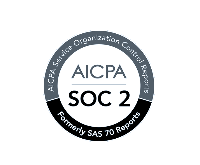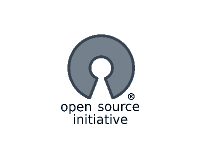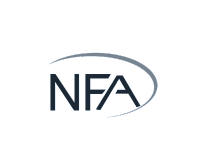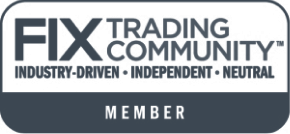
Avoid Common Pitfalls and Ace Connamara’s Interview Homework. Hint: It’s not AI.
During the interview process for an aspiring software engineer, candidates will be asked to complete a take-home coding assignment. At Connamara, we believe these tests allow our leadership team to assess your practical coding skills, problem-solving abilities, and overall approach to meeting deadlines. Tests give the hiring team a standardized, unbiased way to see how you tackle assignments in a simulated work environment while also allowing you to showcase your code quality, readability, adherence to best practices, and overall skills.
With insights from experienced Connamarians (who have all been in your shoes), we’ll share tips and tricks to improve your homework assignment and your chances as a candidate.
Understand the Grading Criteria
We want to get a sense of your code quality and the type of work you might submit to a Connamara project. Because we often design for global enterprise clients, this means following best practices and focusing on code clarity. “Test driven development is what we strive for,” says Kevin Siamis, Vice President and Director of Engineering at Connamara. We’ll also attempt to “fix” or augment a section of your code during the assignment, observing how difficult it is. Time is not part of the grading criteria, but we discuss deadlines below.
The Test is Difficult By Design
“If it’s not hard, that would be impressive,” says Siamis. By intentionally designing a reasonably challenging test, we can give candidates a chance to demonstrate their proficiency. That said, you must be prepared for what Chief Operating Officer Mike Gatny calls a “plot twist” that will evaluate your adaptability and agility.
Don’t Let Your Questions Be Burning: Ask Away
The entire interview team is copied on your follow-up email that recaps the homework, so you can and should reply-all with questions about directions. “There are intentionally ambiguous parts of the requirements, so it is expected that candidates will need clarification,” advises Gatny, adding, “If you are stuck, ask for help. Don’t spin your wheels. Someone on the team knows how to solve your problem. Besides, asking questions is a chance to communicate with the team – something you’d frequently do when working at Connamara.
Pull Request Early and Often To Get Feedback And Make Sure You’re On the Right Track
Before you have written any implementation, a wise first pull request is for your unit tests. Waiting too long to send a pull request is a recipe for disaster and might convey to the team that your methods are less-than-agile. “It’s a bad sign if someone goes dark for several days, trying to figure it all out. That’s a waste of time. There’s no use in agonizing over it and spending time implementing the wrong thing,” Gatny advises.
How To Approach Styling?
While clean, professional design is essential, the hiring team at Connamara will not be assessing your original design abilities. Keep the user interface (UI) simple and readable while focusing on the graded criteria.
Be Wary of “Over-Engineering”
Kevin Siamis reminds prospective candidates, “If what you are doing makes writing tests hard or if it seems complicated, step back and rethink how to simplify.” Over-engineering is a major pitfall with any coding test, and it’s crucial not to convolute your homework by stuffing it full of unnecessary libraries and frameworks. Refactor your code to remove redundancies and extra complexities. Focus on readability and maintainability. And, as advised earlier, PR early and often.
Be Original
Do not write a software application that fetches the solution from a preexisting website. You can use online generators to help verify your inputs and outputs are correct but do not call APIs from the actual production code as the solution. Even if you could prompt AI chatbots correctly to do your homework for you (which we doubt), going about the test this way will lead you down the primrose path. Siamis explains, “We want your code to perform the logic that creates the correct output, not consume someone else’s.”
Manage Your Time
There is no stated time limit for completing your interview homework. But out of respect for your time and the overall hiring process, we’ve designed this test to be completed in a few hours over a few days. When you receive the testing instructions, our hiring managers understand that you may have something else (like a planned vacation) occupying your time. But once you’ve scheduled time to work on it, it should only take a few hours.
At Connamara, we believe in fostering a supportive and inclusive culture. If you have any questions or need clarification on the test requirements, our team is here to help. We want you to feel comfortable and empowered throughout the process.
A Connamara Tradition
As of late, trend pieces by developers who disapprove of tests have created backlash against homework in the recruitment process. But at Connamara, there’s no way around it.
“The interview test is a time-honored Connamara ritual. Everyone who has walked through our doors, whether they have two or thirty years of development experience, has turned in interview homework,” says Connamara’s founder and CEO, Jim Downs.
As such, the test isn’t just a bunch of quizzes or busy work; it’s a direct simulation of one of our projects. However, the homework is also abstract enough that our company cannot generate revenue from your provided sample.
Remember, the coding test is an opportunity to shine and demonstrate your potential.
We eagerly anticipate reviewing your test and witnessing the unique insights and skills you bring to the table. Your success in the homework is not just about securing a position with us—it’s about finding the perfect fit where you can thrive and grow.
So, embrace the challenge, give it your best effort, and know we are rooting for your success. We can’t wait to welcome the best individuals into our Connamara family and embark on an exciting journey together. Good luck, and we look forward to seeing what you can accomplish!












